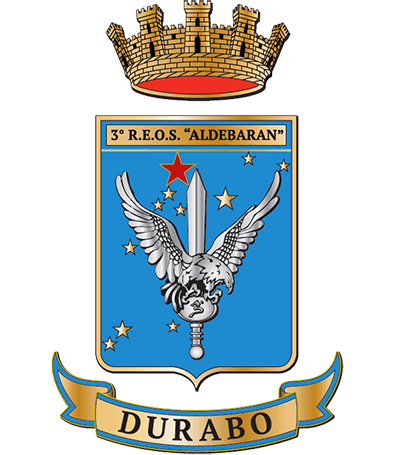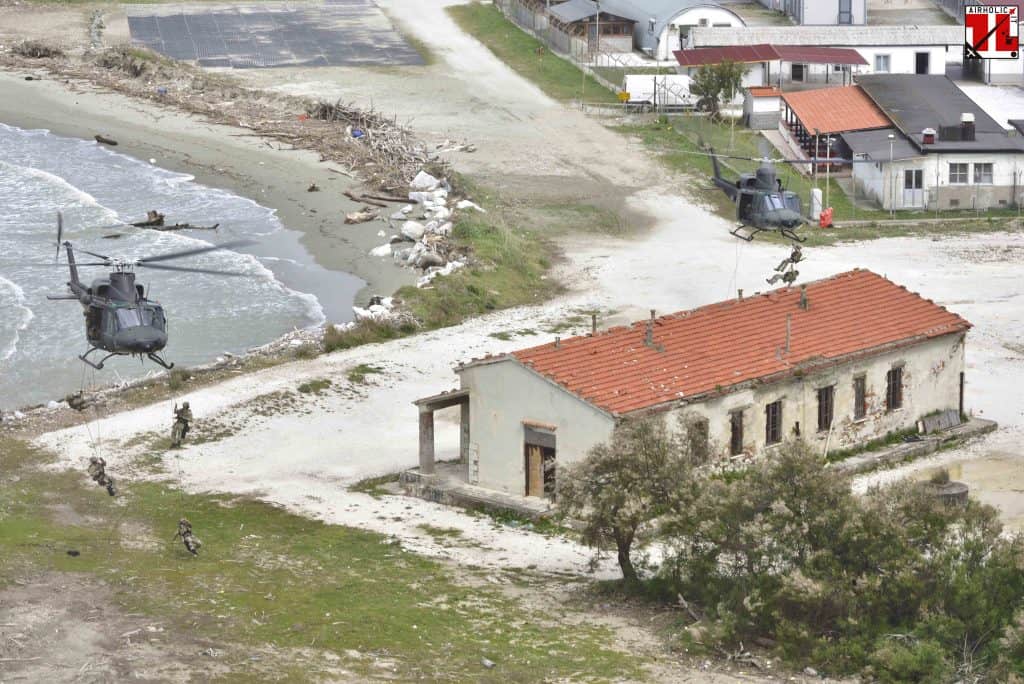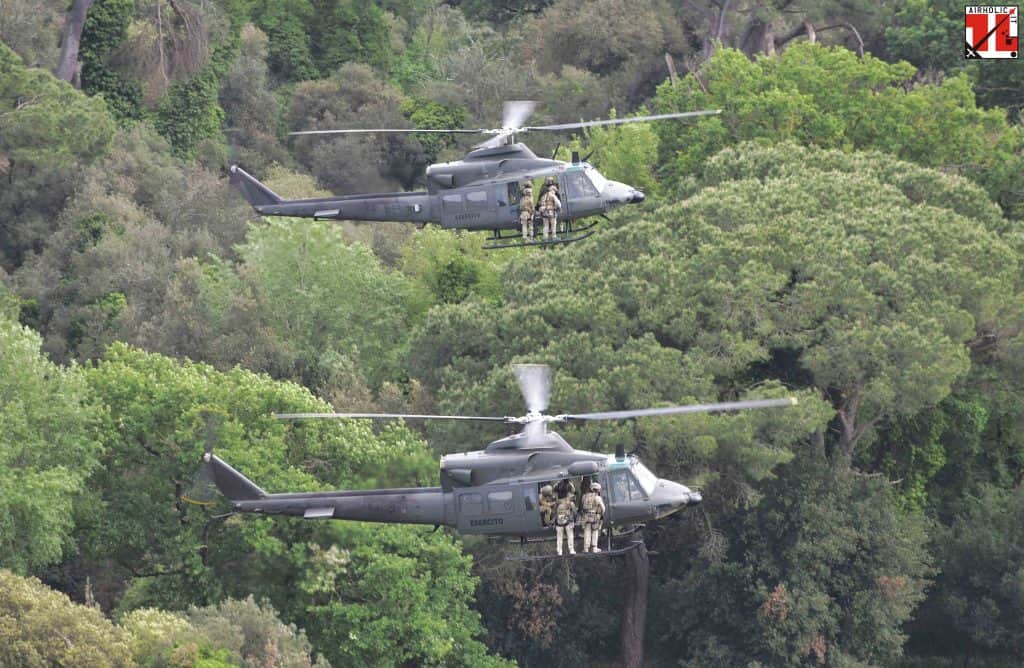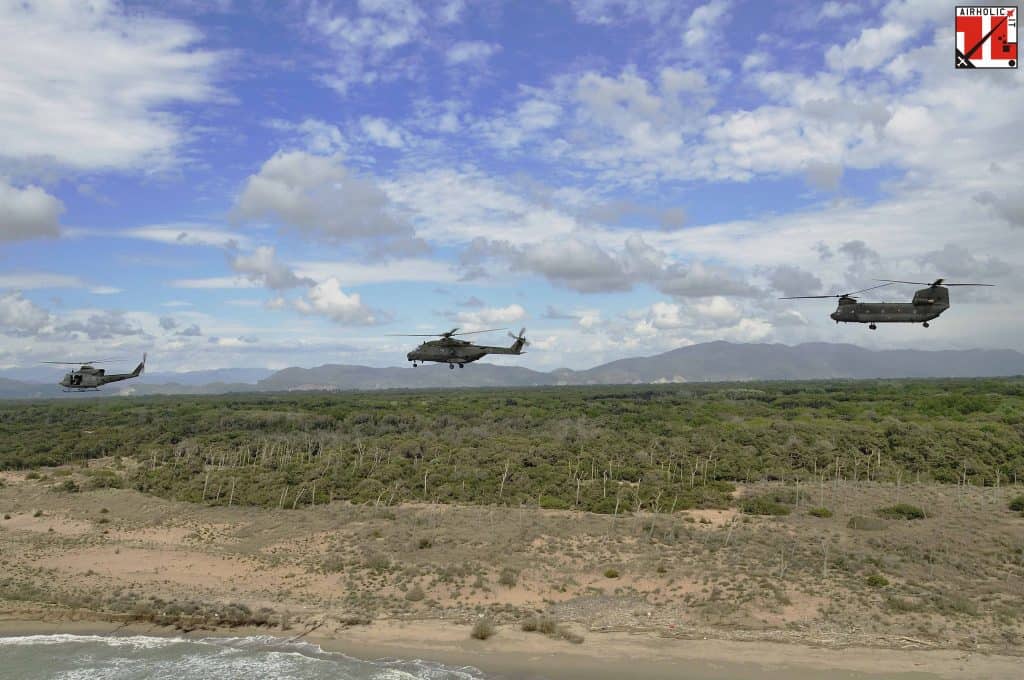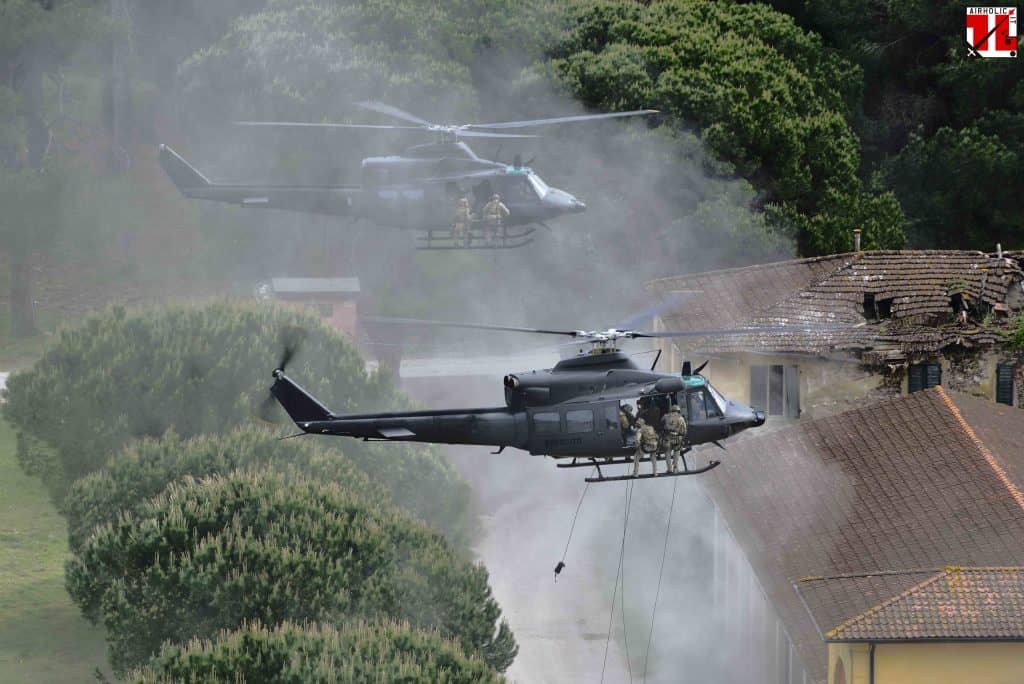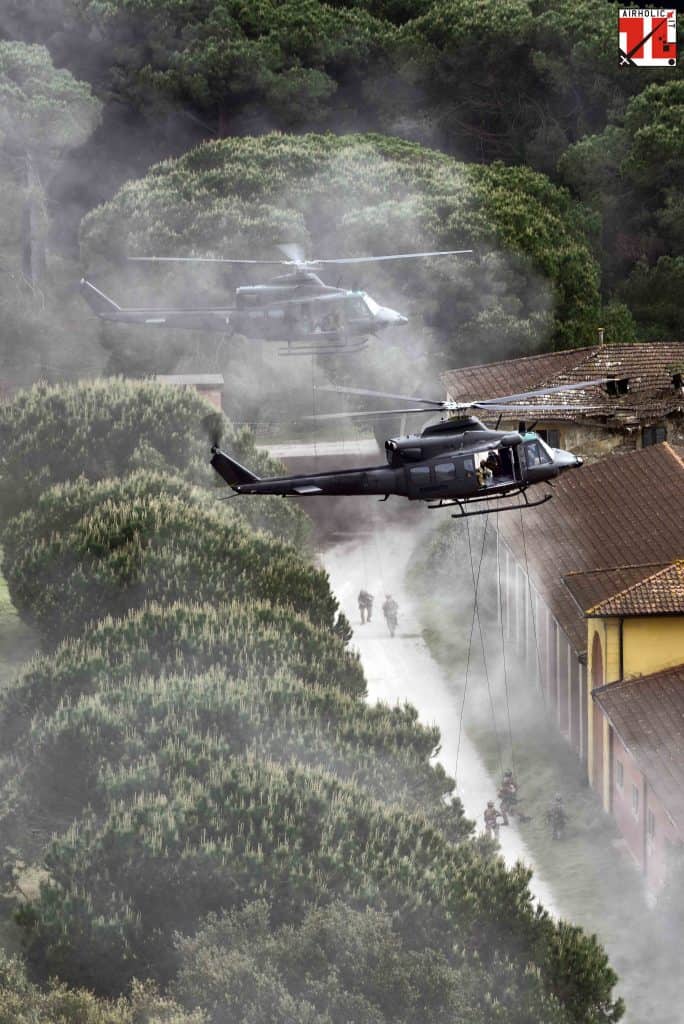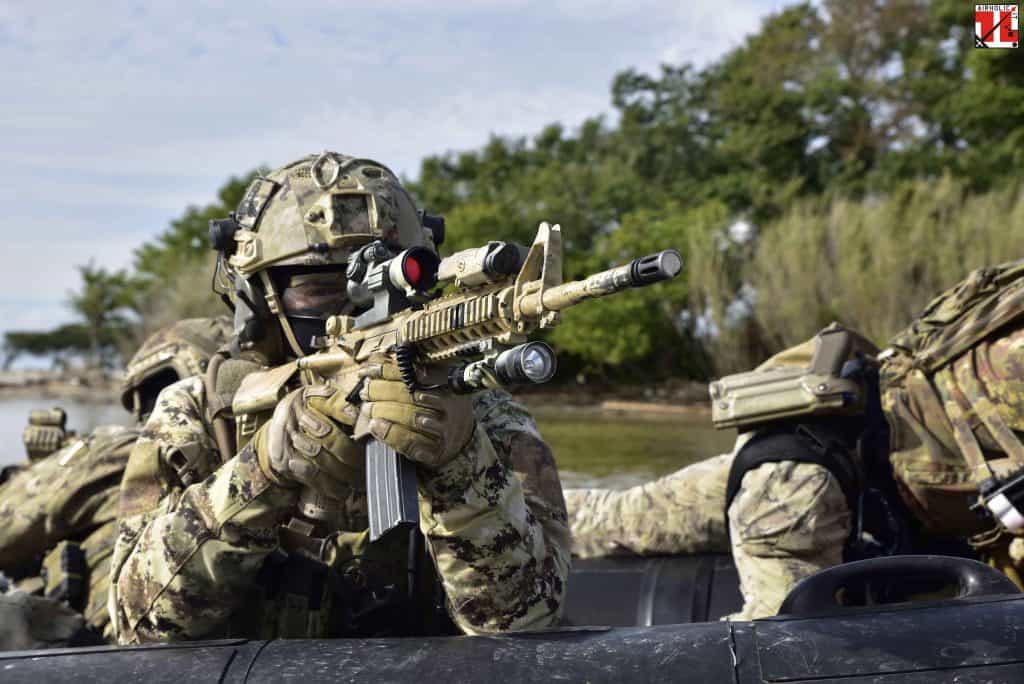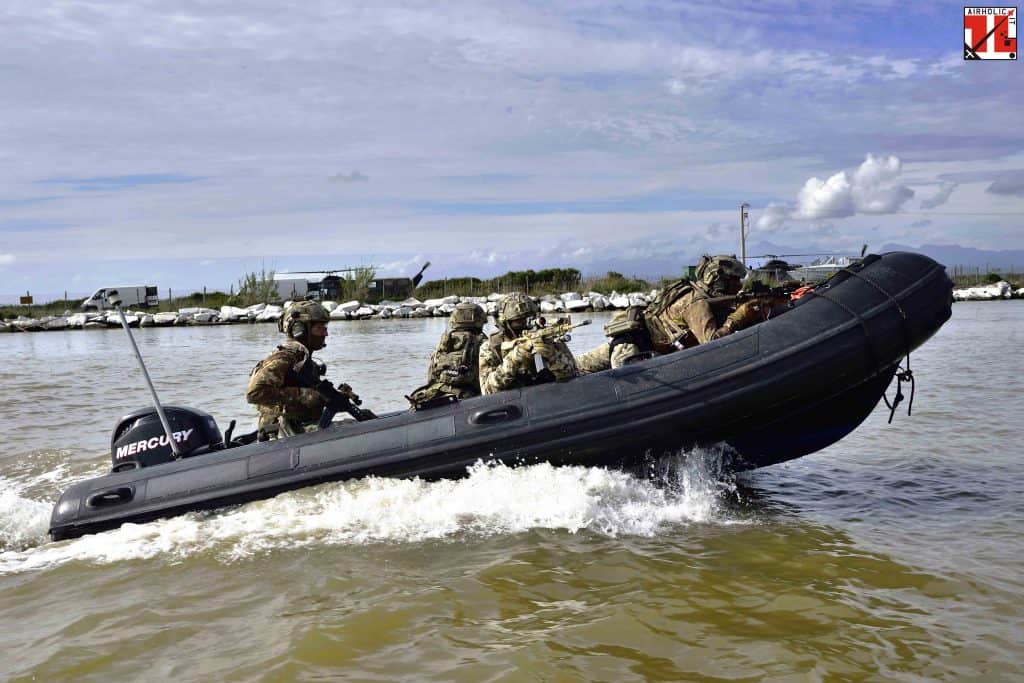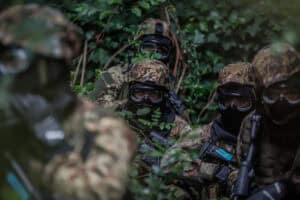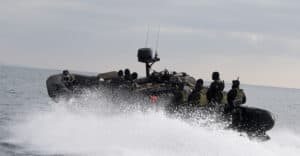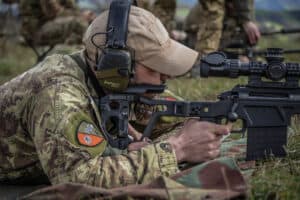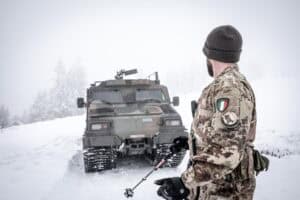3rd SPECIAL OPERATIONS HELICOPTER REGIMENT “ALDEBARAN”
The 3rd Special Operations Helicopters Regiment “Aldebaran” (in Italian: 3°Reggimento Elicotteri per Operazioni Speciali, i.e. R.E.O.S), has been conceived by the Army General Staff as a support to the Special Operations in the 3rd dimension.
The recent past of R.E.O.S is undoubtedly worth of being remembered.
INTRODUCTION
The last quarter of 1998 is expiring, when the 3rd AVES Regiment “Aldebaran” headquartered in Bresso is disbanded.
In the same year, almost at the same time, support the SOTD corps with an extremely specialized unit, was going to be considered as an impellent need by the Army General.
This project proved to be an avant-garde one, much in advance as compared with the other European Armies, such as the French project. AS far as the worldwide projects, it has to be underlined that, since the end of the ’80s, the USA Army had already created the 160th Special Operations Aviation Regiment (Airborne), abbreviated as the 160th SOAR, a unit that provides aviation support for all American general purpose forces and special operations forces.
The 3rd REOS project which is nowadays a reality, implies a large reorganisation and rationalisation process by the General Staff as well as the AVES Special Forces Dept., involving not only the units headquartered in Viterbo but also the ones of whole national territory.
In order to meet the operative requirements dealing with the assigned mission, in 2002 a new unit, , the 26th Army Aviation Group “Giove”, was established by merging the 51th Army Aviation Group “Leone” (based in Viterbo) and the 39th “Drago” (based in Alghero), being at the orders of 1st Regiment AVES “Antares” of Viterbo.
This is actually the first Special Operations Helicopters Unit.
The 26th Army Aviation Group “Giove” is based on two flying-squadrons and 3 lines of helicopters (CH 47C, AB 412, NH 90) with the task of supporting the Special Operations. This group (immediately operative) has been the first AVES Unit deployed in the ANTICA BABILONIA mission in Iraq (Nov 2003- Mar 2004). This mission being accomplished, all the relevant people, i.e. pilots, technicians, boarded machines gunners, were engaged in Afghanistan, within the Aviation Battalion and then in Lebanon within the operative forces of the Leonte Mission.
In order to express all its own power as well as to achieve the “maximum ambition level” within the framework of the aerial special operations, the Unit had to be upgraded to the regimental level (R).
This was established on November 10, 2014, c/o the “Fabbri” airport in Viterbo.
The just constituted REOS (whose motto “Durabo” means “I will resist”) having incorporated the 26th group AVES “Giove”, inherited the name of Aldebaran (the most brighting star of Taurus constellation) as well as the war flag of the former homonymous AVES Regiment of Bresso (as a continuity sign)
The top position, as 1st Commander, was covered by Colonel Andrea Di Stasio who has the taskof completing the REOS project according to a 4-step process. The achievement of the 3rd step will ratify the conclusion of the Full Operation Capability (FOC)
According to timeline schedule, the development program is currently at the 2nd step, dealing with the hiring of specialized personnel to complete the required organic.
The 3rd REOS has obtained certification and validation from COFS (Comando Interforze per le Operazioni delle Forze Speciali, i.e. Interforces Command for the Operations of Special Forces) and NATO and is now in a position to detach a SOATG, (Special Operation Air Task Group), acting as a command and control organisation, complete of supports and crews capable of conducting special operations autonomously both within the national boundaries (Interforces) as well as internationally, with the intervention of at least two Special Operation Air Task Units (SOATU).
To this extent, REOS is able to cooperate with different operative forces from Army or Air Forces, even not specifically devoted to SO support.
In particular, REOS staff is able to interact with different units such as patrols assault helicopters A-129/D, Dornier airplanes, remote controlled (unmanned) aircraft (T-UAV and UAS), thanks to the command and control capability that extends throughout the plane domain.
This is the real difference between REOS and other regiments of both the Army and/or Aviation.
BRIEF ON TRAINING PROCESS
“To support the Special Operations in the third dimension”: what does it mean?
It means providing personnel with uncommon capacity in terms of training allowing special flight operations, using highly specialized units specifically dedicated.
The methods of intervention, the techniques used and the current handling skills of the aircraft are not common to conventional air forces. Thus, it is easily understandable the strategic importance of REOS, which comes into play when the Mission is considered at a high risk level for conventional forces and the consequent missed achievement of the objective could affect the entire campaign.
Therefore, the involved personnel must be properly selected, trained, drilled and equipped for the Special Operations. To meet this target, special training programs have been conceived and established (for the time being under re-definition by SME, no news can be anticipated), to grant the qualification of “Special Operators” for the flight crews of REOS.
The 9th Parachutist Assault Regiment “Col. Moschin” is actually the only Special Forces (SF) unit of the Italian Army. Unique department in its kind, it is framed under the Command of the Army Special Forces (COMFOSE). Under the same command are the Units of Support for Special Operation (SOF), namely:
- 185th Reconnaissance and Target Adquisition Regiment “Folgore”
- 4th Alpini Parachutist Regiment “Ranger”
- 28th Regiment “Pavia”
The components of all these units are highly specialised and undergo to a continuous training so that the acquired skills will be constantly updated and maintained.
This synergic training activity that REOS develops together with Special Forces is very important given that the training of REOS is first of all dedicated to SF/SOF compartments to improve the air-driving skills (flight hours) and especially aimed to develop that special kind of amalgam of common mentality that, according to national and international (NATO) principles, constitutes the basis of success within the on-the-field operations.
To optimize the training phase, REOS has, as stable presence, an integrated Special Forces core unit that provides a range of experience propedeutic to the effective training courses, ensuring complete adherence of the Regiment to the SF/SOF needs, as well as maintaining and harmonizing different procedures of Special Forces Operators and other Departments.
OPERATIVE PHASE: INSERTION AND EXTRACTION TECHNIQUES
The military exercise I participated in, was carried out at the Raiders Training Base of Marina di Pisa and involved three REOS Crews and two sections of Raiders (8 Units) of the Regiment “Col Moschin”.
During an exhaustive briefing, it has been decided to focus the activities on the insertion techniques, such as the Fast Rope and the Rappeling, peculiar techniques utilised by REOS during the rapid insertion of attack teams.
The Fast Rope is an insertion technique carried out during both day and night time, in an urban ambient as well as in pathless or limited areas. It requires a high technical skill in aircraft conduct, and an excellent coordination between the aircrew and the assault teams, achieved with a constant and continuous training. This technique involves the use of a rope called “canapone” attached to the aircraft to allow a rapid descent of the Operators.
The Rappeling (particular attention was paid on this matter) is a technique that can be used, as previously indicated, during day and night time, in urban ambient as well as in pathless or limited areas, for deploying troops from a helicopter in places where the helicopter itself cannot touch down. The landing in these particular areas, are of course precluded, and the operators can only enter from top sites where landing or down hover is foreclosed. The RAPPELING involves the use of ropes (double or single rope) placed under a special anchor attached to the helicopter cargo floor. The operator is belayed and slows down with the technique of friction rope through a descender. This practice compared to the fast-rope is faster, since you can land up to 4 players simultaneously, allowing a quicker intervention on the target.
The helicoters involved with the military exercise were two AB-412A and 1 NH90; a CH-47C joined them during the transfer of the attack team.
Raiders took place on the two AB-412, while NH90 carried out a merely support function.
The preferential use of the AB-412A is due to the fact that, up to now, it results to be a highly reliable equipment, and suitable to operate in the urban environment, characteristics extremely appreciated by the pilots. AB-412A can be easily transported and lined up, thus granting to REOS the capacity of combat support.
Within the frameworks of the peculiar uses of AB.412A, besides Fast Rope and Rappeling, we can also find the heli-sniping and vehicles interdiction, better known as Hard Arrest technique.
The NH90 represents the state of art in the avionic field and in the protection systems. It allows the tactic transportation of troops also in adverse weather conditions, both on day and night time, thus constituting the ideal vehicle for supporting the Special Operations. Thus, a helicopter of great dimensions such as the NH90, can also be utilised for the insertion procedures (Fast Rope, Rappeling).
At 2:00 PM sharp, with the ignition, in rapid succession, of the three helicopter engines, begins the training mission, that has been divided into two modules..
The first module foresees the simulation of an urban field intervention by the Raiders. As a matter of facts, a dismantled structure, located not so far from the Base, has been chosen as the mission target, hypothesizing the presence of a possible threat inside. The two helicopters AB-412A arrived simultaneously on the operative zone, taking place on the two opposite sides of the house.
The positioning in hovering preceded a few seconds the simultaneous descent, as per the Rappeling technique, of the two attack teams. As soon as landed and free from the relevant ropes, the Raiders rapidly blocked the two house inlets, thus preventing any eventual escape. In the meantime, the two helicopters went away from the area.
The simulation ended with the inlet into the structure and with the successive neutralisation of the threat. Once the Raiders have been recovered, we returned to the Base for no more than a few minutes. Then, the operation was repeated, with the purpose of improving the descent phase and the disengaging from the ropes.
The second module foresees to operate in a much more diversified ambient, such as a structure surrounded by a deep vegetation, thus representing major difficulties both for the Pilots and for the Raiders. The exercise is being held in the Pine Forest of San Rossore.
During the flight, there is time to resume the formation of AB-412A and NH90, now enriched by a CH-47C which has been with us for a few minutes towards the operational area.
Once reached the target, the two AB-412A arrange their position side by side in hovering, at a higher level than the previous raid.
The turbulence generated by the helicopters causes the raising of a large quantity of dust and consequent temporary reduction of visibility, thus increasing the degree of difficulty of the mission. The two assault teams go down toward the ground even with Rappeling technique since even in this case it was of paramount importance the rapidity of action.
The Raiders, taking advantage of the white blanket of dust, covertly get in the structure, also in this case neutralizing the alleged threat.
Once recovered all the SF operators, we definitely returned to the Base.
However the activity does not end here. Surprisingly, I have the opportunity to attend an interesting out-of-the-program: on board of two speedboats, we simulate the insertion of an assault team in the costal area located near the mouth of the Arno River; this event definitely ends up the training activities.
As a conclusion, it has to be underlined that such a kind of activities are extremely important for many aspects:
1) The accomplishment of such a type of missions requires a high and constant level of training;
2) This type of training on the field is important since it develops the cohesion and the adequate mind-set of the Raiders. Flight crews and operators of Special / Forces for Special Operations Forces must deeply know each other for developing the mutual confidence and the proper mind-set to effectively address the assigned missions.
Given all the above, it follows an extremely positive picture of the sector Army Special Forces: highly qualified staffs that carries out its mission with great professionalism, thanks to uncommon abilities. The 3rd Helicopters Regiment for Special Operation represents indeed “the top of the iceberg” of an elite of divisions: and among them we can mention the 9th Regiment Col Moschin.
Acknowledgements
I wish to thank the Press Office of the Army Staff for giving me the permission to perform the herewith reported activity; Col. A.Di Stasio, Liut. Col. L. Bolla for their support and availability during all the operative phase of the exercise; Cap.C.Broccolini, Liut. F. Dezulian and Liut. D. Rossetti for their continuous support during the realisation of the present report; the 9th “Col. Moschin” Raiders Team.
